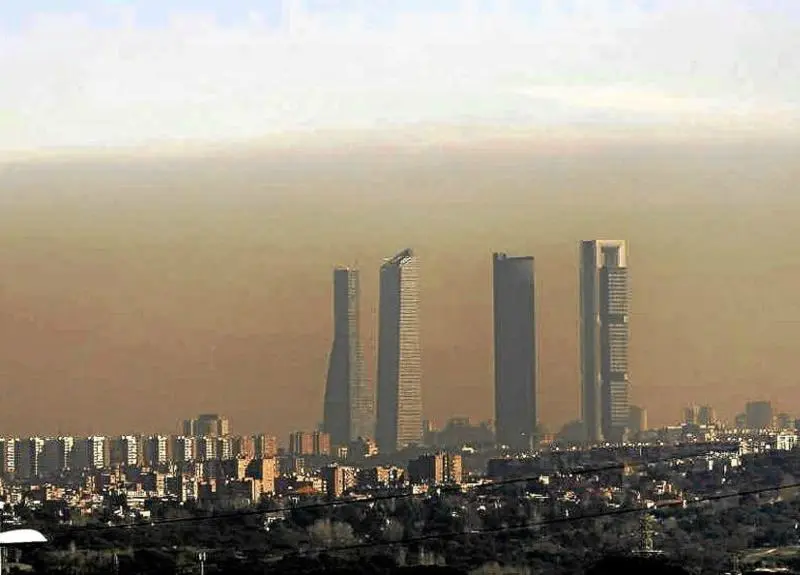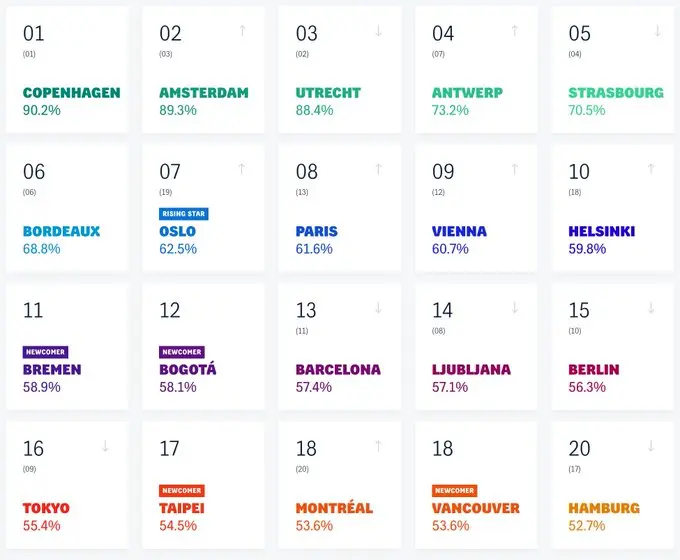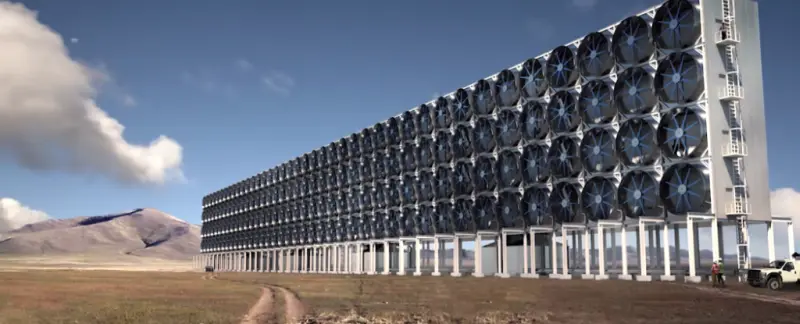
What do we do about the pollution problem?
August 27, 2024
They say, you can't learn from someone else's mistakes, but there's also the saying, when you see your neighbor's beard on fire, soak yours in water. When it comes to pollution, no one can remain indifferent. It’s time to prioritize it in our lives, especially regarding air pollution, which appears to be the main cause of global warming due to the greenhouse effect. This issue has a direct impact on human health and influences other types of pollution, including water, soil, and living organisms.
Although Earth and humanity face numerous threats, some are barely controllable, like the eruption of super volcanoes. Similarly, it's challenging to address the threat of asteroids potentially crashing into our planet. NASA has already started preparing for this with initiatives like the 2016 launch of the OSIRIS-REx space probe to track and analyze a dark and potentially dangerous asteroid called Bennu. Both a super volcano eruption and an asteroid impact would cause climate changes that could lead to mass extinctions and even threaten human survival, as happened to the dinosaurs 65 million years ago.
However, we don’t need to wait for such exceptional situations to start worrying about the future of life on our planet. Air pollution and its consequence, global warming, are significant enough to prompt urgent action. We have known this since at least 1972 when the United Nations Climate Change conferences began. Yet, as we’ve seen, the measures taken have been insufficient, leading to an increasingly worrying situation each year, especially regarding air pollution.
Next, we will delve into the problems we face and then try to discover ways to solve these significant issues. It’s clear we cannot continue to be passive, and it's time to use our intelligence to address the serious issue of climate change.
The problem of air pollution and the worrying state of urban atmospheres

The saying "every cloud has a silver lining" can illustrate the situation with pollution in Madrid. Administrations and residents are quite concerned about the air they breathe, leading to various initiatives aimed at solving the problem and hopefully resulting in cleaner air in the future.
Air pollution by the numbers
Air pollution causes 5.5 million deaths worldwide annually, with 55% occurring in China and India, according to a study presented at the American Association for the Advancement of Science's annual meeting. The study was conducted by researchers from the University of British Columbia, Tsinghua University, and the Indian Institute of Technology Bombay.
The European Environment Agency (EEA) reports that air pollution causes approximately 467,000 premature deaths in Europe each year, with urban dwellers at higher risk as 85% are exposed to fine particulate matter (PM2.5) at levels harmful according to the World Health Organization (WHO).
Furthermore, EEA data indicates nitrogen dioxide (NO2) emissions from vehicles and heating boilers could cause around 71,000 premature deaths annually, and ground-level ozone (O3) might kill about 17,000 people each year.
Research by the Barcelona Institute for Global Health and the University of Leeds confirms the link between pollution and childhood asthma, affecting 334 million people globally, with a significant increase in prevalence since the 1950s. The researchers attribute this rise to changes in environmental exposures, including air pollution.
A study by Public Health Ontario and the Institute for Clinical Evaluative Sciences in Canada found that people living within 50 meters of busy roads have a 7% higher chance of developing dementia than those living more than 300 meters away. This study included over 6.5 million Ontario residents.
These statistics highlight the gravity of the situation.
Solutions to pollution from cars in cities
Finding viable alternatives to combustion engine cars is the most urgent measure for big cities to avoid severe health risks. Here are some potential solutions and their global development status.
 The Copenhagenize
The Copenhagenize
Bicycles would be the ideal solution to reduce the pollution caused by cars in cities. Unfortunately, we do not live in an ideal world, so it will be practically impossible for them to become the primary transportation option in urban areas. There are some notable exceptions, like Amsterdam, where 75% of its 750,000 residents own a bike and 50% use it daily. However, many other cities face significant obstacles to such widespread adoption due to their geography, climate, and especially the difficulty of coexisting with cars and other motorized vehicles. Other cities with high bicycle usage that have managed to overcome these issues include Copenhagen, where 35% of the population uses bikes as their regular mode of transportation. In Copenhagen, there are said to be more bikes than people, with 350 kilometers of bike lanes. Cities like Utrecht, Antwerp, Strasbourg, Bordeaux, Oslo, Paris, Vienna, and Helsinki also rank high for bicycle use. In Spain, Barcelona is notable, ranking 13th, and Sevilla has seen a tenfold increase in bike use in just a few years, thanks to the public bike system Sevici, which facilitates over 25,000 trips daily. Other Spanish cities where bike usage is significantly increasing include Valencia and Zaragoza.
Publications like The Copenhagenize rankings certainly help promote this mode of transportation, which, besides being non-polluting, is clearly beneficial for people's health as it incorporates physical exercise into daily commutes.
Another initiative worth mentioning is the startup Donkey Republic, which created a bike rental platform. This project, born in Denmark in 2015, offers the possibility of renting a bike for 24 hours at a reduced price. This service has been launched in various European cities, including Madrid and Barcelona.
Electric cars are the solution to the pollution caused by combustion engine cars in cities, but it doesn’t seem easy to get rid of the millions of cars currently in circulation and still being sold. Fortunately, two recent developments are likely to be a turning point, leading to a much better situation regarding urban pollution in the coming years. One is the huge success of the Tesla Model 3 pre-orders, which has spurred the entire automotive industry to rapidly develop electric cars to meet the growing demand expected in the coming years. The other is the announcement from various city and country governments worldwide about plans to ban the circulation or even the sale of combustion engine vehicles in the next decade. For example, in late 2016, during the C40 Mayors Summit on climate actions in Paris, Madrid, and Mexico City agreed to ban diesel vehicles from their cities by 2025.
Additionally, countries like Finland are committed to ending the pollution caused by coal use for energy. Finland has pledged to completely eliminate coal for electricity production by 2030, while boosting renewable energy sources to ensure that 50 % of the energy consumed in the country is renewable by 2030 and 100 % by 2030. 2050. Similarly, Canada plans to shut down all coal-fired power plants by 2030, as announced by the Minister of Environment and Climate Change last year. France also continues its plan to phase out coal for energy purposes. What remains to be addressed are initiatives to replace heating systems based on polluting fuels.
Electric car rentals through companies like SHARE NOW and Free2move are a significant innovation in non-polluting transportation and demonstrate real progress toward a better city model. The goal is to create a system where people don’t need to own and independently use their own vehicles, which is highly inefficient and a major cause of traffic congestion and air pollution in cities.
SHARE NOW was founded in 2019 as a joint venture between BMW Group and Mercedes-Benz Mobility AG (formerly Daimler AG). The original idea of car-sharing began in 2007 with car2go. car2go, a subsidiary of Mercedes-Benz Mobility AG, officially launched in 2010 and expanded to 26 cities in Europe, North America, and China with over 14,000 Mercedes-Benz and smart cars. DriveNow, founded in 2011 as a joint venture, became a wholly-owned subsidiary of the BMW Group in March 2018. The services of car2go and DriveNow, once competitors, merged to form SHARE NOW. In July 2022, Free2move (formerly Emov) announced the acquisition of SHARE NOW, and together they now serve 6 million users worldwide.
Another noteworthy initiative is the electric scooter service by Cooltra, which has over 7,000 scooters available in major European tourist cities, including 20 in Spain. Launched in Barcelona in March 2016 as a new sustainable transport method, it was the first multi-country service in Europe. Since its inception, the service has improved Barcelona's air quality, saving 1,260 kg of CO2 each week.
Electric car-sharing cooperatives are another promising option for reducing urban air pollution from cars. Som Mobilitat, based in Mataró, aims to create cities with fewer cars, less noise, and cleaner air. They promote shared electric mobility using renewable energy, allowing users to rent and share electric vehicles via mobile apps in a P2P (peer-to-peer) model. This initiative seeks to reduce the health and climate impacts of car pollution. A similar initiative is Ecotxe Som Moviment in Mallorca, which also relied on crowdfunding for its launch and initial financing.
Non-polluting public transport has long been a key strategy for local administrations to combat urban pollution, but it seems these efforts have not been sufficient or efficient. Electric buses, trams, subways, and commuter trains can be part of the solution in cities that can establish a convenient transportation network, encouraging people to leave their cars at home to avoid traffic and reduce pollution. If cities build these infrastructures and make them affordable and convenient, people will likely use them more, significantly improving urban air quality. A notable example of effective initiatives comes from the Netherlands, the first country to power its trains entirely with electricity generated from wind energy.
Startups working to address pollution issues
While government entities in major cities strive to find short-term solutions to air pollution, often causing inconveniences for many people who find their commuting options limited, numerous companies and researchers are working on long-term solutions. These efforts aim to offer better alternatives than merely restricting private vehicle traffic in cities. Let's explore some of these initiatives:
The Climate-KIC Accelerator, the EU's startup accelerator focused on fighting climate change, concluded its 2017 program in Spain with six finalist companies that are leading the country's innovation efforts to mitigate climate change. These six startups received €90,000 in prizes during the third phase of the program, as well as training valued at €50,000. Here are the activities these startups are involved in:
Auara sells bottled mineral water made from recycled materials, using its profits to fund projects that bring clean drinking water to developing countries. Balamis develops technologies aimed at optimizing water usage through an innovative moisture sensor, achieving significant savings compared to similar solutions on the market. Ciclogreen is an online platform that promotes sustainable mobility to reduce CO2 emissions. Fairchanges is a green marketplace that encourages the purchase of sustainable products from eco-friendly brands without intermediaries. Microbiotech focuses on implementing new industrial solutions to substantially improve energy efficiency in products and processes while reducing their CO2 footprint. Tech4+ helps mitigate global warming by applying its patented thermal hydrolysis technology.

Carbon Engineering, a Canadian startup, has developed an innovative method for removing CO2 from the atmosphere. Their system processes and concentrates the pollutant gas, converting it into small spheres that can be used as fuel. This method utilizes large fans and a hydroxide solution that reacts with the carbon dioxide in the air, ultimately producing small spheres of calcium carbonate. The resulting product is then heated to temperatures between 800 and 900 degrees Celsius to obtain pure carbon. This compound can be stored or processed into hydrocarbons. Their goal is to build a treatment plant capable of extracting one million tons of CO2 per day.
Caia is a robot created by entrepreneur Diva Tommei and funded through a successful crowdfunding campaign. It is a 40-centimeter-diameter sphere weighing about 3.5 kilograms, designed to follow the sun's movement and reflect its rays into a room, eliminating the need for electricity for lighting and heating. The robot operates autonomously, powered by solar energy, and can track the sun's movement throughout the day.
Bound4Blue, a Spanish startup, aims to combat pollution from ships by reducing dependence on fossil fuels and CO2 emissions. They have designed a rigid sail for maritime transport that reduces fuel consumption and emission levels. Additionally, they are working on an alternative application of rigid sail technology for vessels that will produce hydrogen and oxygen through seawater electrolysis, in a 100% renewable and cost-competitive manner.
Trenza Metal Área, a Spanish company based in Zamora, has developed a research project in collaboration with the University of Granada, resulting in a patented new construction material called Geosilex. This high CO2-absorbing lime is made from industrial waste. The production of acetylene generates a byproduct mainly composed of calcium hydroxide, which is usually discarded. However, Trenza Metal Área collects and processes this waste to remove impurities and repurpose it. The resulting material is dried and supplied in powder form, compatible with mixing with coal-fired power plant ashes. These soluble silicate ashes enable the material to set, making it a viable cement substitute. The carbon footprint of producing this new material is zero, as it comes from industrial waste. Additionally, it can be used as a CO2 absorbent in chimneys of industries like cement plants, enhancing CO2 capture without emissions.
Elegant Embellishments is an architectural studio that has developed a new facade cladding system to improve air quality around buildings. They use titanium dioxide as the construction material, which, when exposed to ultraviolet rays from the sun, undergoes a chemical reaction that transforms nitrogen oxides in the air into less harmful substances such as calcium nitrate, water, or carbon dioxide. The company used this system to clad the exterior facade of the Torre de Especialidades, a hospital in Mexico City. They installed a honeycomb-structured false wall impregnated with this compound. The structure circulates air through the cells, allowing the chemical compound to work effectively. This helps counteract the pollution impact of approximately 1,000 cars.
BCQ is the architectural firm responsible for remodeling the Sarajevo Bridge in Barcelona. The renovation includes new materials such as vines, iron, concrete, and lighting. Solar energy capture has also been incorporated for nighttime lighting, along with new photocatalytic concrete that reduces pollution and cleans the air of CO2. The goal of this remodel is to transform the bridge into a new landscaped civic space equipped with contemporary technology to improve the habitability of the surroundings while minimizing or eliminating consumption, emissions, and maintenance costs.
Research projects proposing solutions to pollution problems
Researchers from the Chemistry Department at the University of Copenhagen have developed a system that captures pollutants from the atmosphere and converts them into a powder, making them easier to remove. After designing this invention, they proceeded with its patent and are now working to make it commercially viable. Inspired by natural processes in Earth's atmosphere, the Danish chemists use ozone and ultraviolet radiation to magnetize the pollutant particles. These particles then attract each other, becoming larger and heavier, eventually being drawn to a surface that is much easier to clean than the air.
CarbFix is a project involving scientists from Columbia University, the University of Copenhagen, the University of Iceland, Reykjavik Energy, and the Hellisheidi power plant in Iceland. Their goal is to capture carbon emissions and convert them into stone for storage. They have designed a process that mixes carbon dioxide and hydrogen sulfide released by the power plant with water, injecting the liquid into underground basalt layers. In less than two years, the mixture transforms into hard carbonate, safely storing the carbon and preventing it from reaching the atmosphere.
Researchers from the Polytechnic University of Catalonia have created biological concrete that accelerates the growth of pigmented microorganisms, which cover the concrete and absorb CO2 from the atmosphere. This material serves as an insulator and thermal regulator by capturing solar radiation. It adjusts thermal conductivity inside buildings based on the achieved temperature. Its production avoids many negative impacts of the construction industry, purifying the air and enhancing biodiversity. It also has decorative uses, allowing for colorful building facades or integration into landscaped areas for a sustainable aesthetic.
AIRbezen is a project led by Professor Roeland Samson and Ph.D. candidate Jelle Hofman from the University of Antwerp, using strawberry plants to monitor atmospheric pollution. The study was conducted in Antwerp, Amsterdam, and Rotterdam, and later in Zaragoza. Strawberry plants act as pollution thermometers due to their hairy leaves that attract magnetizable particles released by burning fossil fuels, wear on train rails, brake discs, and other transportation-related sources. These studies will improve our understanding of city pollution levels, leading to better improvement measures.
Researchers at the Oak Ridge National Laboratory, part of the U.S. Department of Energy, have discovered a method to convert carbon dioxide into ethanol, a liquid fuel already used as a gasoline additive. They developed a catalyst from carbon, copper, and nitrogen with a textured surface that concentrates electrochemical reactions at its tips. Applying voltage converts a CO2 solution into ethanol with high efficiency. The materials are relatively cheap, and the process works at room temperature, crucial advantages for future market implementation.
Urban Bees is a project by students from the School of Aeronautics and Space at the Polytechnic University of Madrid, entered into the global Tsinghua-Santander World Challenges of the 21st Century Program organized by Tsinghua University and Banco Santander. Their goal is to develop bee-shaped drones to promote sustainable urban development while reducing pollution effects. The drone swarms will collect city waste for recycling, establishing a central base for all project members to deliver collected materials, helping clean large Chinese cities' streets and generating useful new items from recycled objects.
How large companies are tackling pollution problems
IBM Research uses silicon photonics, a technology that transfers data through light, enabling computing at the speed of light. These chips could be integrated into a network of sensors on the ground, infrastructure, or even flying drones, generating data that, when combined with real-time wind data, satellite information, and historical sources, can create complex environmental models to detect pollution sources and quantities as they occur. These intelligent sensors can detect environmental pollution at light speed. This will make new, affordable sensor technologies available for use in natural gas extraction wells, storage facilities, and distribution pipelines, helping to pinpoint invisible leaks in real-time, reducing pollution, waste, and the risk of catastrophic events.
In 2017, Google committed to addressing its significant energy consumption, which contributes to pollution from energy production. To mitigate this, the company pledged to operate exclusively on non-polluting, renewable energy sources.
Shiseido, the world's oldest cosmetics company, installed an advertising banner in central Madrid capable of absorbing up to 85 percent of greenhouse gases like methane and nitrogen oxide (NOX), equivalent to the absorption capacity of 1,000 trees over a year. The 1,000-square-meter banner is impregnated with titanium dioxide (TiO2), which purifies the air through photocatalysis, a decomposition reaction catalyzed by light energy.
The Spanish energy company Repsol, through its foundation, promotes an initiative called the Entrepreneurs Fund, aimed at fostering the development of innovative projects in energy and energy efficiency. It accelerates the development and implementation of the best technological solutions to bring them to market as quickly as possible. Notable supported projects include:
Biogas+: Led by Eudald Casals Mercadal and Ariadna Peral, this project uses nanotechnology to optimize biogas production. Controlled introduction of iron oxide nanoparticles into organic waste treatment processes triples biogas production by enhancing biological efficiency. Other benefits include reduced residual matter and improved stability, optimizing treatment and transport processes.
Thermoelectric Devices for Heat Recovery in Automotive Sector: These devices, installed in vehicle exhaust systems, convert combustion gas heat into electricity to power the vehicle's battery. Ideal for heavy or light vehicles with consistent operation, the system can save up to 3% in fuel and reduce emissions by an additional 3%.
Conclusion
As we have seen throughout this article, we cannot rely solely on government entities to solve pollution problems, especially knowing that some governments are not even interested in taking the necessary measures. Just as the ban on CFCs in 1992 led to the recovery of the ozone layer, it's time to do the same with combustion engine vehicles. Combustion engine vehicles are proven to be one of the main causes of air pollution and the greenhouse effect causing global warming.
Everyone must take responsibility for how their actions contribute to worsening the situation. We should adopt habits aimed at reducing consumption, such as reusing and recycling as much as possible, to avoid pollution from industrial production processes. Additionally, we should seriously consider using new non-polluting transportation methods in the short term and ensure our next car is electric. Professionally, we can help promote new, less polluting transportation models, for example, by developing Big Data in cities. Supported by various IoT measurement sensors and artificial intelligence, this could help reduce traffic jams, one of the significant contributors to air pollution. In the long term, developing autonomous cars governed by artificial intelligence will significantly improve traffic conditions in cities, introducing more efficient and less polluting driving methods until this major problem is almost entirely resolved. But for this to happen, we need to start making bold decisions and work on them. The time to act is now.
To conclude, we recommend listening to this podcast, which perfectly describes the potential consequences of global warming for our planet.
Our latest news
Interested in learning more about how we are constantly adapting to the new digital frontier?

Insight
February 5, 2025
Pharmaceutical tenders: top 5 obstacles and how to overcome them

Tech Insight
January 13, 2025
How to bring your application closer to everyone

Insight
December 10, 2024
Groundbreaking technologies today that will reshape the innovation landscape in 2025

Insight
December 3, 2024
Sustainable Development: Minimizing Digital Footprint and Optimizing Consumption
